Meeting with Majid Abbasi
For about thirty years, Majid Abassi gained his experience in Iran and abroad in the design of book covers. Invested in many structures to enhance graphic design, he was kind enough to grant us this interview between a Toronto-Tehran flight; many thanks to him.
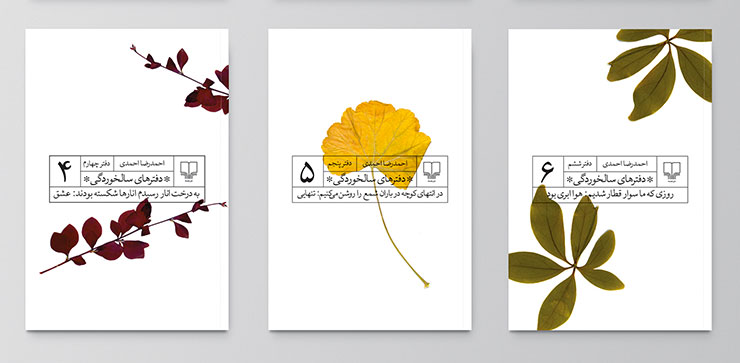
Book covers, Ahmadreza Ahmadi, Elderly Peaople's notes, 2010, Cheshmeh Publication
Could you tell us briefly about your background, what led you to book design?
I designed my first book cover 28 years ago; with colored paper, photo, Letraset, Rapidograph, and hand, in the absence of today’s amazing tools. But, two years after, I began working with one of the best Iranian publishers in Teheran with which I have continued cooperating for 26 years; publisher of books on poetry, fiction, history, art, and philosophy. This gave me the opportunity to design several book covers with great enthusiasm. Now, at the threshold of my fifties, I can say that I am very satisfied with this process, although discontented with many other unattainable dreams that I am the only one to know. Book cover design was an extraordinary opportunity for demonstrating the abilities, improving the skills, constantly gaining experiences, and developing ideas in design. I have designed book covers more than anything else. I have also engaged in book design in the recent years, although much less than book cover designing.
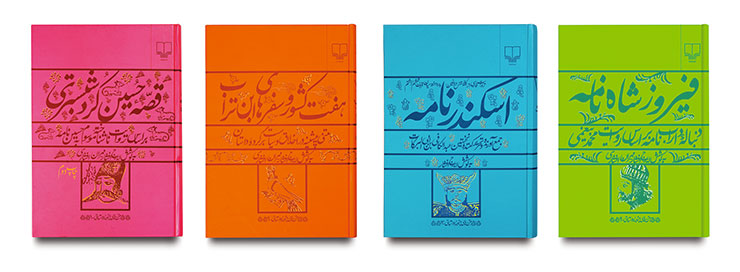
Book covers, Iraj Afshar éditions, 2006–2010, Cheshmeh publication
You gave some lectures at the University of Tehran, you were part to the Iranian Graphic Designers Society and the Neshan magazine. How do you perceive Iranian graphic design and its evolution these last ten years?
To the three main activities you mentioned must be added directing some important exhibitions. Persianissiomo was an exhibition of the selected posters of Iranian graphic designers I mounted in seven countries, namely the United States, Russia, Italy, Poland, Turkey, Cyprus, and India. It was eventually displayed on App Store after four years (the 9th and the last version of the exhibition Persianissimo' was an APP for both iOS and Android). I also coordinated four Iranian typography exhibitions with the help of my colleagues during five years in Iran. I wrote in an article about today’s Iranian graphic design: “… the new generation of the Iranian graphic designers who basically grew after the 1979 revolution and the war (1980–1988), changed the graphic design in Iran, were the result of their previous generation mentioned before. The audacity and the new ideas of the young graphic designers in using Farsi typography considering the modern technology, their lyricism as well as searching for new concepts with a new image of the Iranian graphic design, are part of what they have done so far. And now they claim a national graphic design with high standards.”
Majid Abbasi, “Originality in Graphic Design Today”, TYPO magazine 15, Prague (2005).
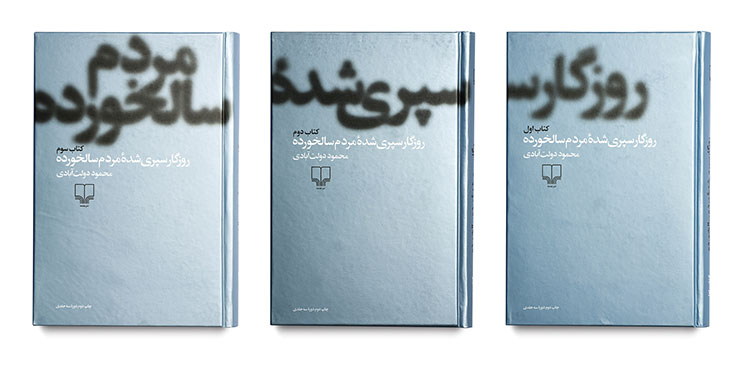
Book cover, Elapsed Time of Elderly People; A novel by Mahmoud Dowlatabadi, in three volumes – Second edition, 2007
How would you describe your style and its influences?
When designing covers, I attempt to create a truthful environment for interacting with the readers, in addition to be loyal to the content; an outcome in which there is no overstatement or prolixity: simple and transparent! A balance between form and content must be maintained in my work. The works must be appealing, comprehensible, have the sufficient life span, and be designed with the minimum elements. This is what pleases me. I sometimes design with type, picture, or a combination of both of them. My collection of covers includes this sort of works.
Generally, how to do you work on a design project? Have you a kind of methodology?
Any work of design must be carried out step-by-step. Design is a process and does not descend from heaven! The offer must be grasped and examined, then the subject needs to be analyzed and challenged. Afterwards, different capabilities of design must be put to use, the client must be consulted and his/her opinions must be sought –even if they are irrelevant. At last, the new outcome must be evaluated and the work must be finalized. When I receive an offer, I assess my capabilities and review different solutions in my mind as much as possible. Once I am contented, I begin the initial implementation. The surrounding environment or sometimes the things and people impact my work. While I am unconsciously influenced by Iranian culture.
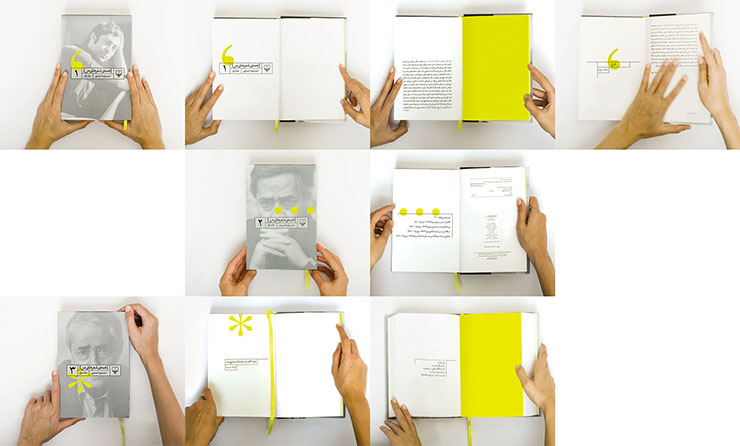
Book design, Ahmadreza Ahmadi; All My Poems, 2009 Cheshmeh Publication
Which book or cover design project has given you the most satisfaction so far?
It is difficult to answer! Perhaps I’d better say none of them. I still want to do something other than these; something unexpected for myself, but honest with people. Of course, I know it sounds like a cliché. I mean it is easy to say but hard to put in practice, very hard!
You design mostly Persian books, what differences do you see between Western and Persian book design? Does the typography and calligraphy plays a more important role in Iran?
Typography plays a major role. My works with Persian type and Eastern atmosphere are no doubt quite distinct from their Western counterparts. My book covers clearly manifest and portray my attitude. They represent what I am. Uwe Loesch wrote in a note once that my book cover designs are like small posters: “They look like little posters standing effectively out against the rest of the world thanks to their expressiveness. However, there lies the danger that the books designed by Majid Abbasi will be bought and liked only because of their worth seeing designs. What more would one want?”
Uwe Loesch “A feast for the eyes”, Literary Images (2009).
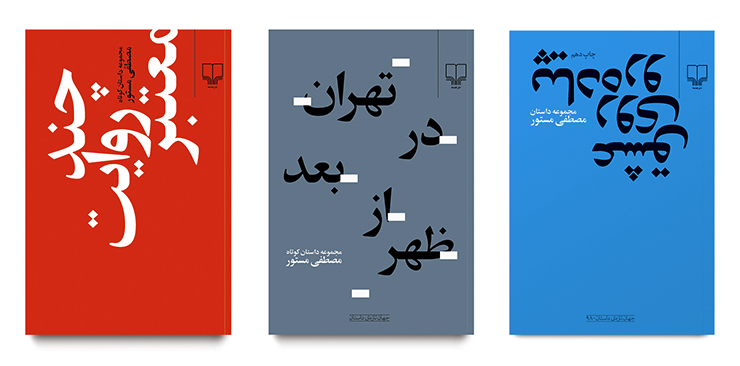
Book covers, Mostafa Mastour’s Short Stories, 2004-2011 Cheshmeh Publication
What are your projects for the next year?
I still yearn for new works. Meanwhile, I am currently occupied mainly with: Establishing a communication and design studio in an international scale based in Toronto and Tehran, creating a design portfolio of my 25 years, participating in the Alliance Graphique Internationale (AGI) congress in Switzerland and presenting my design works to the world’s most eminent designers, reconstructing and designing my new website on my 50th birthday on May 6th 2015, and more teaching.
Interview by Thierry Fétiveau – May, 12, 2015
Further reading:Majid's Abbasi's website
His portfolio at Behance
AM+MA, studio based in Toronto







